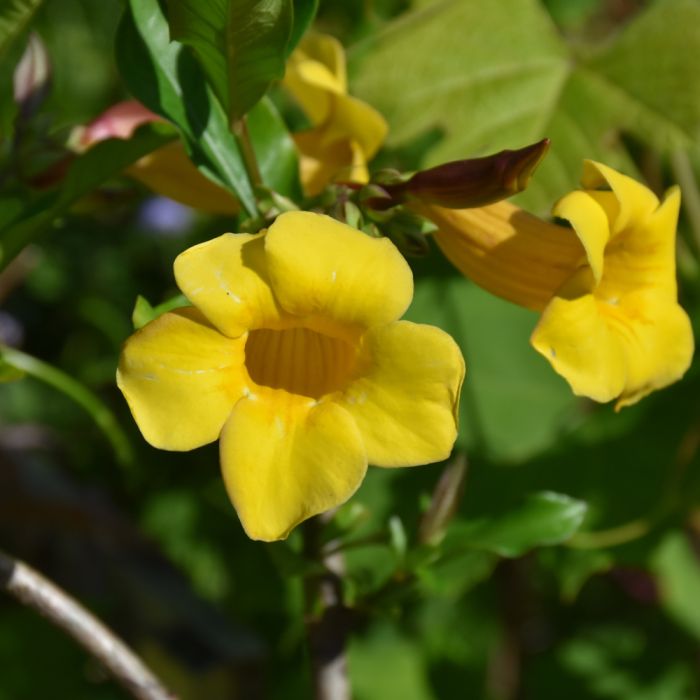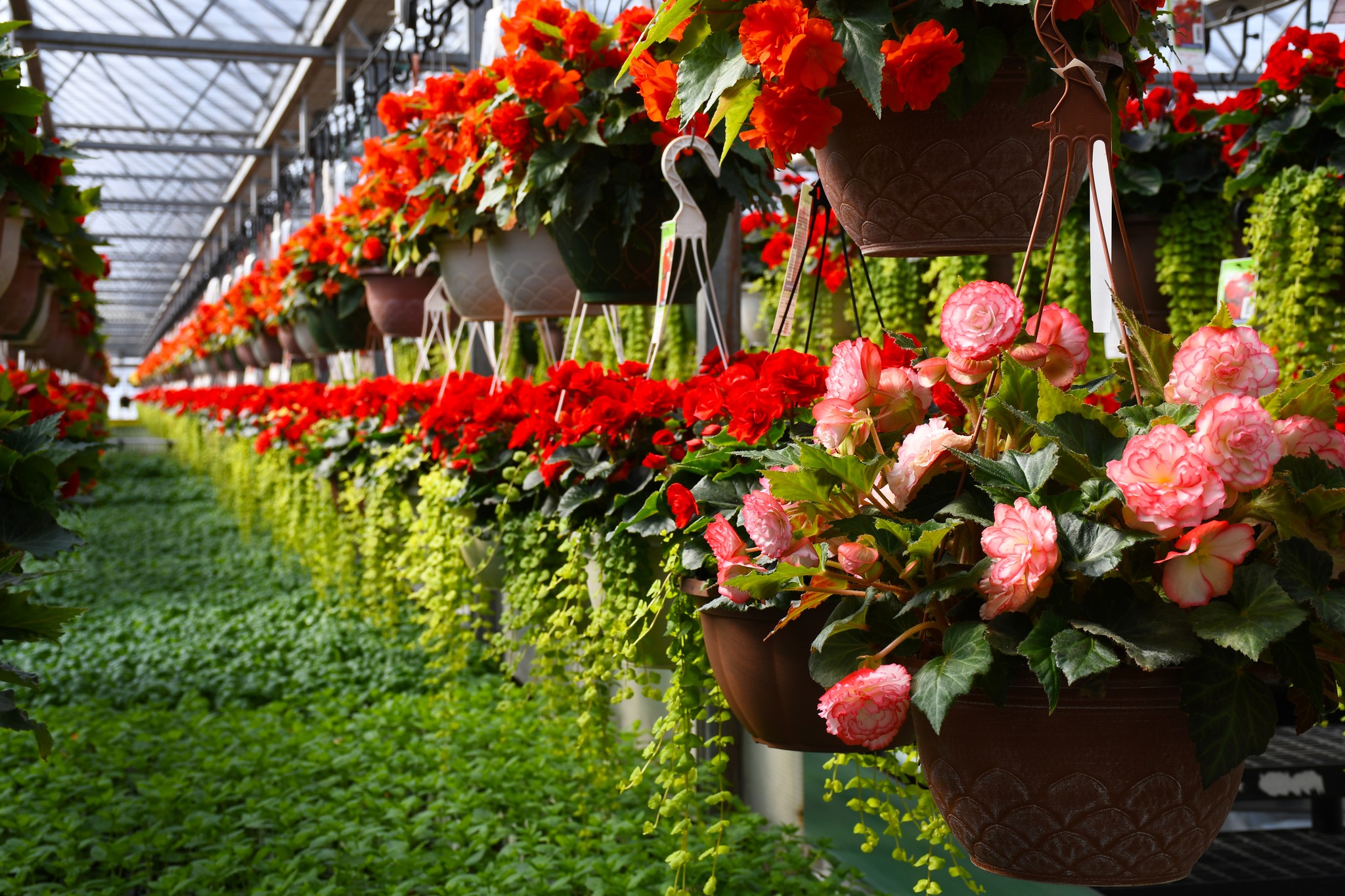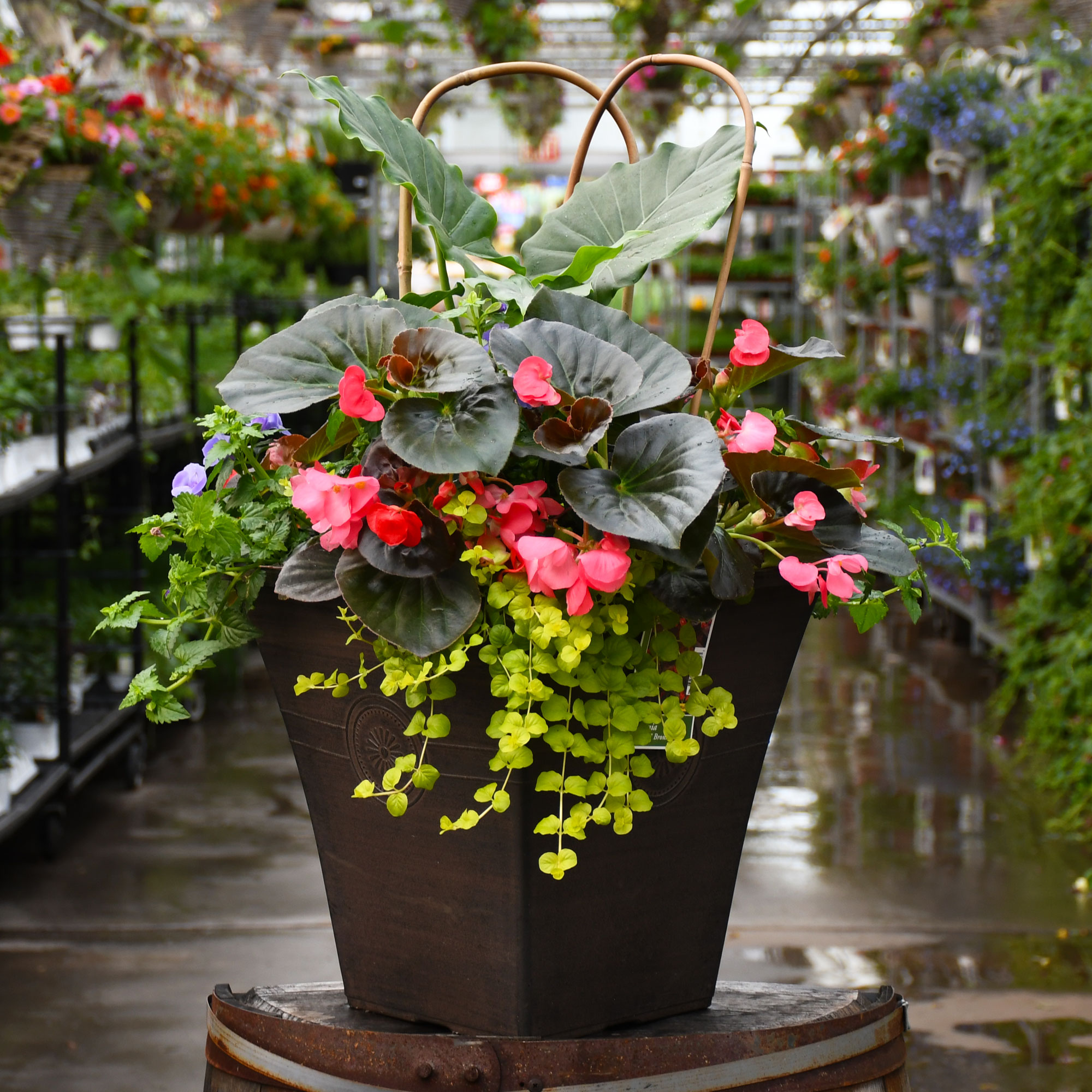Allamanda Bush


Out of stock
Temporarily Out of Stock- Sun Preference
- Full-Sun, Part-Sun
Description
Bush Allamanda features showy clusters of fragrant yellow trumpet-shaped flowers with gold throats at the ends of the branches from early winter to late fall, which emerge from distinctive burgundy flower buds. Its attractive glossy pointy leaves emerge chartreuse in spring, turning dark green in color the rest of the year. The dark red stems can be quite attractive.
Direct from the Grower
When you see the Gerten Grown logo on our annuals, you know you're getting a fresh plant directly from our greenhouse. We've been perfecting our growing process for over four generations and pride ourselves on providing local quality and freshness to our customers. Better pricing on better quality plant material, that's Gerten Grown.
Details
Bush Allamanda | Allamanda schottii
Hardiness Zone: (annual)
Other Names: Yellow Bell, Buttercup Flower
Description:
This attractive, vigorous heat loving plant produces volumes of fragrant yellow trumpet flowers nearly all year long; has an upright, bushy habit, making it a perfect garden or border accent; nice for large patio containers
Ornamental Features
Bush Allamanda features showy clusters of fragrant yellow trumpet-shaped flowers with gold throats at the ends of the branches from early winter to late fall, which emerge from distinctive burgundy flower buds. Its attractive glossy pointy leaves emerge chartreuse in spring, turning dark green in color the rest of the year. The dark red stems can be quite attractive.
Landscape Attributes
Bush Allamanda is a multi-stemmed evergreen tropical plant with a mounded form. Its medium texture blends into the garden, but can always be balanced by a couple of finer or coarser plants for an effective composition.
This is a relatively low maintenance plant, and can be pruned at anytime. It is a good choice for attracting bees and butterflies to your yard. It has no significant negative characteristics.
Bush Allamanda is recommended for the following landscape applications;
- Accent
- Mass Planting
- Hedges/Screening
- General Garden Use
- Container Planting
Planting & Growing
This plant is native to the tropics and prefers growing in moist environments with evenly warm conditions all year round. In our climate, it is usually grown as an outdoor annual in the garden or in a container. If you want it to survive the winter, it can be brought in to the house and provided with special care, and then returned to the garden the following season. In its preferred tropical habitat, it can grow to be around 5 feet tall at maturity, with a spread of 5 feet. However, when grown as an annual or when overwintered indoors, it can be expected to perform differently, and its exact height and spread will depend on many factors; you may wish to consult with our experts as to how it might perform in your specific application and growing conditions.
This plant does best in full sun to partial shade. It does best in average to evenly moist conditions, but will not tolerate standing water. This plant should not require much in the way of fertilizing once established, although it may appreciate a shot of general-purpose fertilizer from time to time early in the growing season. It is not particular as to soil pH, but grows best in rich soils. It is somewhat tolerant of urban pollution. This species is not originally from North America, and parts of it are known to be toxic to humans and animals, so care should be exercised in planting it around children and pets.
Bush Allamanda is a fine choice for the garden, but it is also a good selection for planting in outdoor pots and containers. Because of its height, it is often used as a 'thriller' in the 'spiller-thriller-filler' container combination; plant it near the center of the pot, surrounded by smaller plants and those that spill over the edges. It is even sizeable enough that it can be grown alone in a suitable container. Note that when growing plants in outdoor containers and baskets, they may require more frequent waterings than they would in the yard or garden. Be aware that in our climate, most plants cannot be expected to survive the winter if left in containers outdoors, and this plant is no exception. Contact our experts for more information on how to protect it over the winter months.
-- THIS IS A TROPICAL PLANT AND SHOULD NOT BE EXPECTED TO SURVIVE THE WINTER OUTDOORS IN OUR CLIMATE --
More Information
| Sun Preference | Full-Sun, Part-Sun |
|---|---|
| Plant Life Cycle | Annual |
| Mature Height (Range) | 49" - 60" |
| Mature Spread (Range) | Over 36" |


